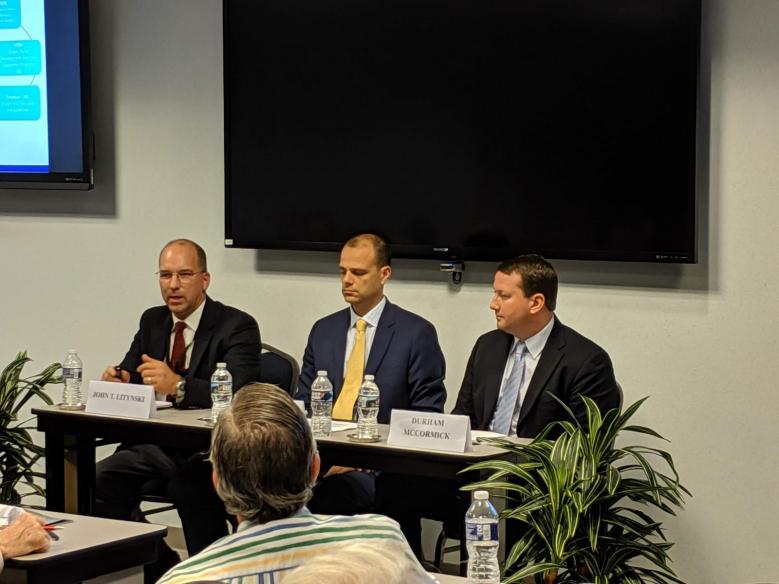
Companies See Less Loss, More Profit In Carbon Capture Through 45Q
By Benjamin Doggett
2019 USEA Summer Intern
John Litynski, Deputy Director of Advanced Fossil Technology Systems in the Energy Department’s Office of Fossil Energy joined Ryan Bernstein and Durham McCormick from McGuire Woods to speak at a briefing hosted by USEA on the status of the 45Q tax credit and the prospects for CCUS.
The 45Q tax credit was enacted in 2008 as an incentive for private construction and investment in CCUS projects. Initially, the 45Q tax credit offered up to $10/metric ton for captured carbon for enhanced oil recovery (EOR) and a tax credit of $20/ metric ton for captured carbon stored in underground reservoirs.
Recently, amendments have been made to 45Q that all three speakers hope will make the tax credit more attractive to potential investors. The most notable amendments to 45Q are the credit increase from $10/ton to $35/ton for captured carbon that is used for EOR and an increase from $20/ton to $50/ton for captured carbon that is stored underground.
In addition to the tax credit increase, there was also an amendment to allow direct air capture facilities to claim the credit. Before, only CCS facilities capturing emissions from industrial and power facilities were eligible to claim incentives under the 45Q tax credit.
One of the goals that the Office of Fossil Energy is working toward is lowering the actual cost of capturing carbon. In 2012, it cost a company $80 to capture a metric ton of carbon emissions.
Through research and advancements in technology, the cost to capture carbon is $50 per ton. The current goal is to lower the cost to capture carbon to $30 per ton by 2023.
The tax credit currently makes companies whole, but eventually it would allow companies that capture carbon to make a profit.
Since 2008 more than 30 EOR injection sights have been permitted which collectively have injected more than 13 million tons of CO2 into oil fields.
In order for companies to be eligible for 45Q tax incentives, they need to have begun construction of their CCS infrastructure by 2023.
